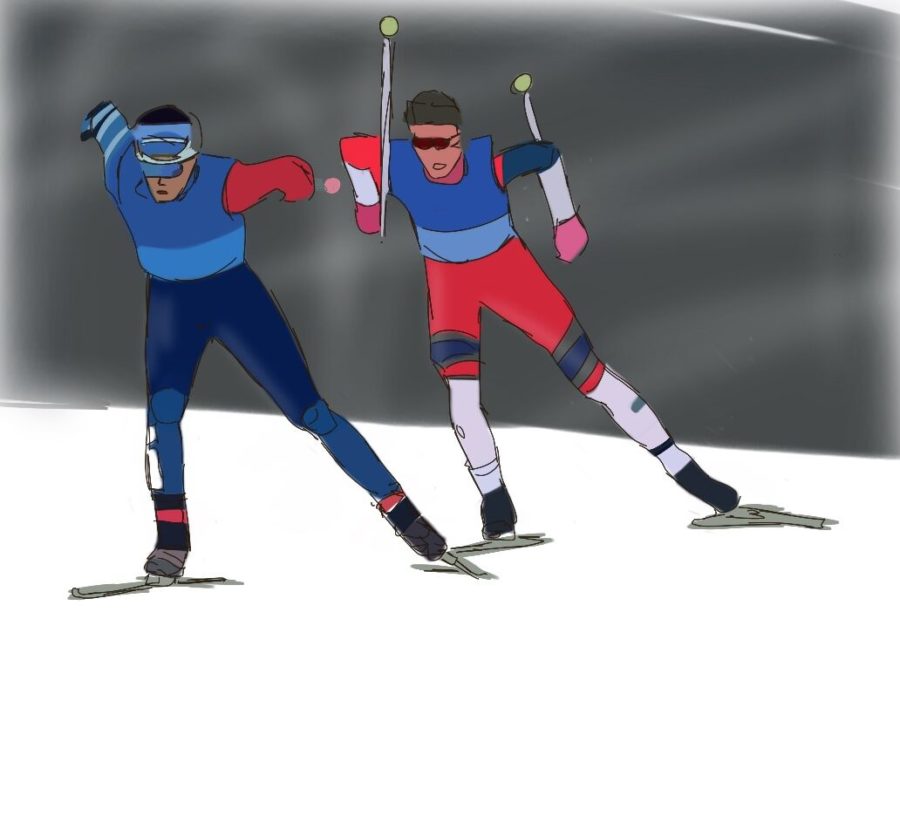Popular Winter Sports: Five Tips for New Minetonka Nordic Ski Racers
November 22, 2019
When it comes to picking up a sport for the first time, Nordic Skiing seems pretty difficult. It requires heavy equipment, complicated techniques, and special tracks to practice and compete. But it’s also super unique, has tons of health benefits and is a fun activity. Considering trying Nordic? Here are five things to keep in mind.
- Start with Skate: Nordic skiing has two disciplines: classic and skate. Classic skis are built so that they grip the snow in front of you better. Classic skiing consists of pushing your skis forward in parallel lines. Skate skiers, on the other hand, push off with their feet at an angle, much like ice skating. Skate and classic also require different boots and poles. For beginners, it is recommended to learn skate skiing first, according to Sean Kern, the head Nordic coach at MHS.
In skate skiing, he said, “It is easier to make a lot of progress technically and get moving relatively quickly.”
Anika Lang, ‘23, has skied for three years at MMW (and plans to ski for the next four at MHS) and prefers skate skiing because “you get to go very fast” and “it’s harder and more of a workout.”
- Get High-Quality Gear: Regardless of whether you choose to go with classic or skate skiing, it is very important to purchase good gear from a reputable source. Kern recommends Gear West, Pioneer Midwest, and Tonka Cycle and Ski for accurate sizing. These places will also give student discounts if you mention you go to Minnetonka. It also helps to bring a friend who is more experienced in skiing to help you choose your gear.
- You’ll Need to Bundle Up: Obviously, Nordic skiing takes place outside in the wintertime, so you’ll have to dress warm. Avoid cotton fabrics and go with clothing that is moisture wicking. A good rule of thumb is, wear two layers in 30-degree weather, and for every ten degrees the temperature drops, add another layer. Start with a base top and tights, add on a mid-weight fleece top, then layer on wind-breaker pants and a jacket.
Lang prefers to wear a headband that covers her ears instead of a hat so that “[she] can have a ponytail and [her] hair stays in place.”
- Take Care Of Your Equipment: Nordic skis need maintenance to function properly. Skis must be waxed every 3-8 days of riding, or when the base (the bottom) starts to look dry or flaky. You also need to make sure that the base is flat from edge to edge. If it’s not, you’ll need to get your skis stone ground or sanded. Edges must be free from rust.
“It’s important to avoid skiing on anything that could damage the base,” added Kern, “such as rocks or sticks.”
If your skis are not in good condition, your performance will suffer.
- It Takes Time: Be patient. Just like with learning any new sport, you’ll have to put in a lot of time and effort in order to succeed. It takes a lot of cardiovascular effort, too, said Kern, so be ready to do some running before you even get on the snow.
It can be “difficult to feel successful at first,” acknowledged Kern, but “with a bit of practice you can make huge progress.”
“Focus on your balance, so that you don’t fall over,” suggested Lang. “And work hard, because it’s really fun when you achieve [your] goal[s].”






























